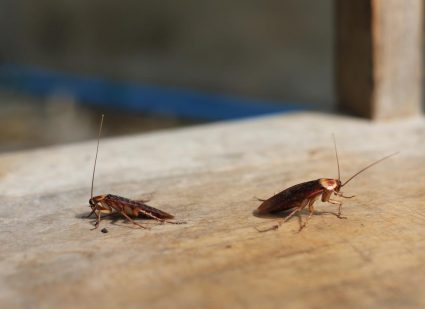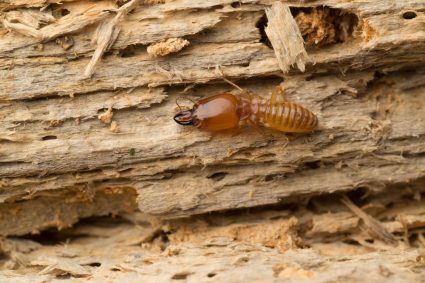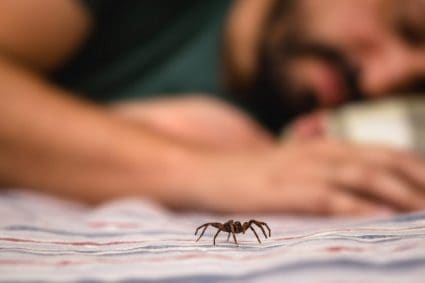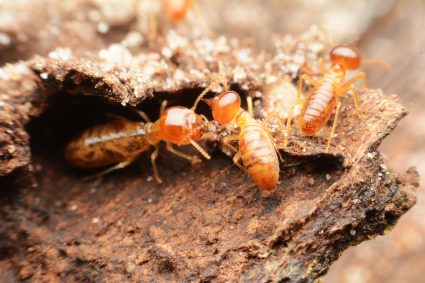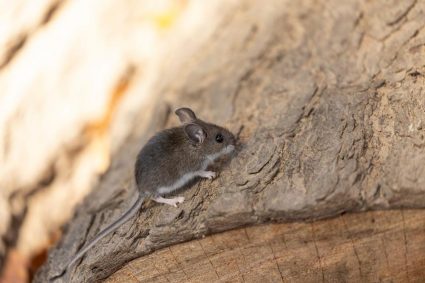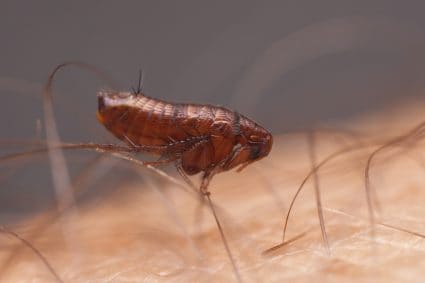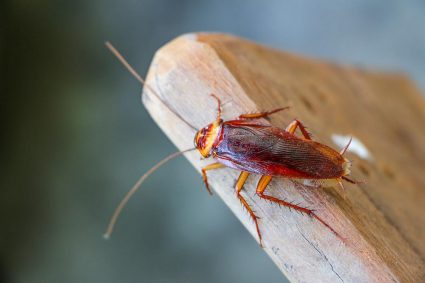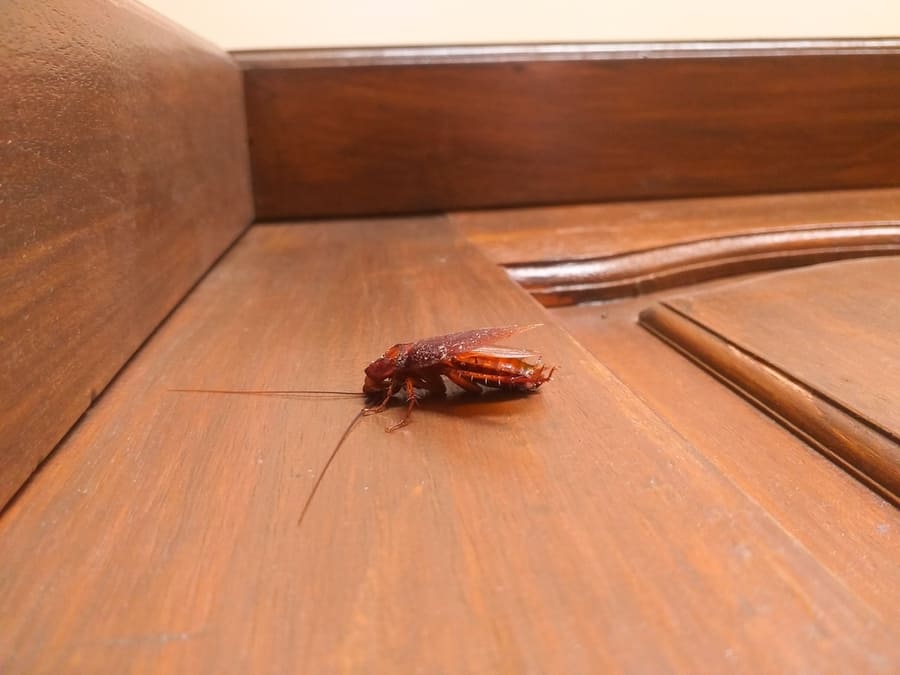
If you’ve ever had a roach infestation, you may know how frustrating and challenging it can be to get rid of them.
Besides being filthy, roaches are common and persistent pests that can carry and spread harmful bacteria, viruses, parasites, and their droppings can trigger asthma and allergy symptoms.
Roaches infestation is problematic, but the worst happens when they come under doors.
This guide will explain the best preventative methods to help keep roaches at bay. Following these tips, you can take proactive steps to protect your home from unwelcome visitors and enjoy a pest-free living space.
Roaches are resilient creatures that can survive a month without water and food and reproduce quickly. There are several common roaches, including German, American, Oriental, Brown-Banded, and smokey Roaches.
Sealing gaps and cracks in your home is an effective way to prevent roaches from entering. Keeping the area around the door clean can help reduce the attraction, and using door sweeps can create a physical barrier that insects can not crawl through.
Continue reading for a comprehensive guide to preventing roaches from coming under the doors.
The next part of the article will give you introductory knowledge about common types of roaches, followed by a brief discussion about their preventive measure to keep them coming under the door.
In the end, the frequently asked questions about roaches will follow a detailed conclusion.
Roaches and Their Common Types
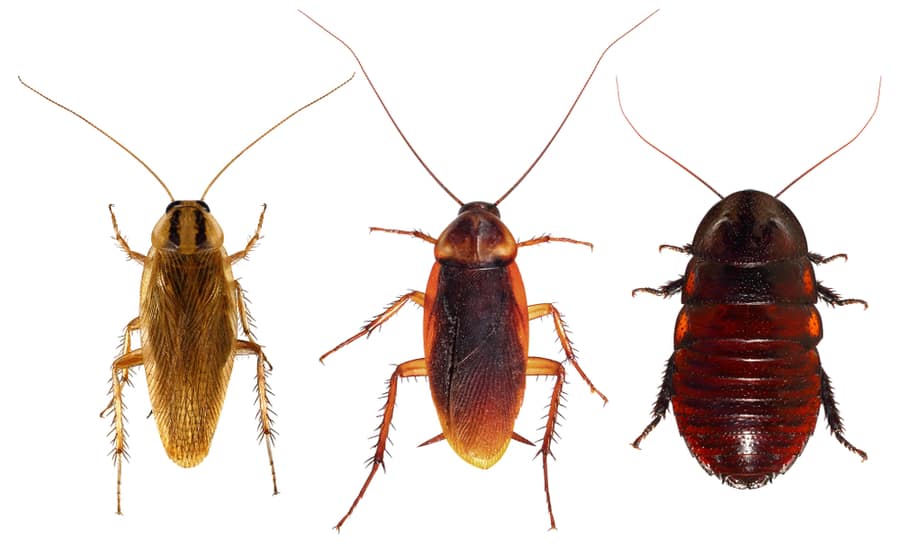
Roaches belong to the Blattodea order. Roaches are resilient creatures that can survive a month without water and food.
They prefer warm and moist environments and have hard exoskeletons ranging in size from small to large. Amazingly, they reproduce quickly; their eggs can hatch within two weeks!
Roaches are an all-too-common problem in homes and businesses worldwide, with countless species around the globe. However, few have proven particularly troublesome.
It’s essential to identify the type of roach that has infested your property and understand its behavior and traits to make an effective control strategy and get rid of them quickly. Their most common types include:
- German Roaches – These are small, annoying creatures that love to wreak havoc in homes. They’re only half an inch long and have a light brown or tan complexion with two black stripes behind their eyes. You’ll probably see them at night.
- American Roaches – They have a reddish brown coloring and a yellow figure-eight pattern on their head. These 1.5″ long bugs love to warm, damp spaces like basements or sewers.
- Oriental Roaches – These types of roaches have sleek, glossy bodies and uncanny survival skills- they can stay in damp, dark places like basements or crawl spaces for up to two years. They reproduce quickly, so if you spot one, there’s a chance it could be the start of a roach apocalypse.
- Brown-Banded Roaches – These are small and have yellowish bands on their wings. They’re most active while you sleep and can set up shop in bedrooms, bathrooms, or kitchens.
- Smokey Brown Roaches – These have glossy, reddish brown bodies that are hard to miss. This species can fly and have a long life span of up to one year under optimum conditions.
4 Effective Ways To Keep Roaches From Coming Under the Door
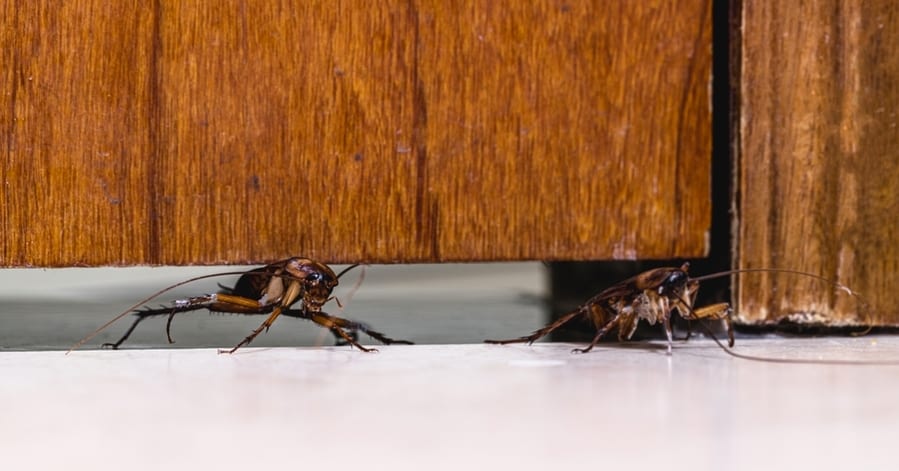
Roaches can be a real irritation when they come into your home.
They are hard to eliminate and can quickly spread throughout your house.
Unfortunately, if they find their way under the door, they can come in more easily, making it even harder to control.
To prevent roaches from coming under the door, below are some steps you can take:
1. Sealing Gaps and Cracks
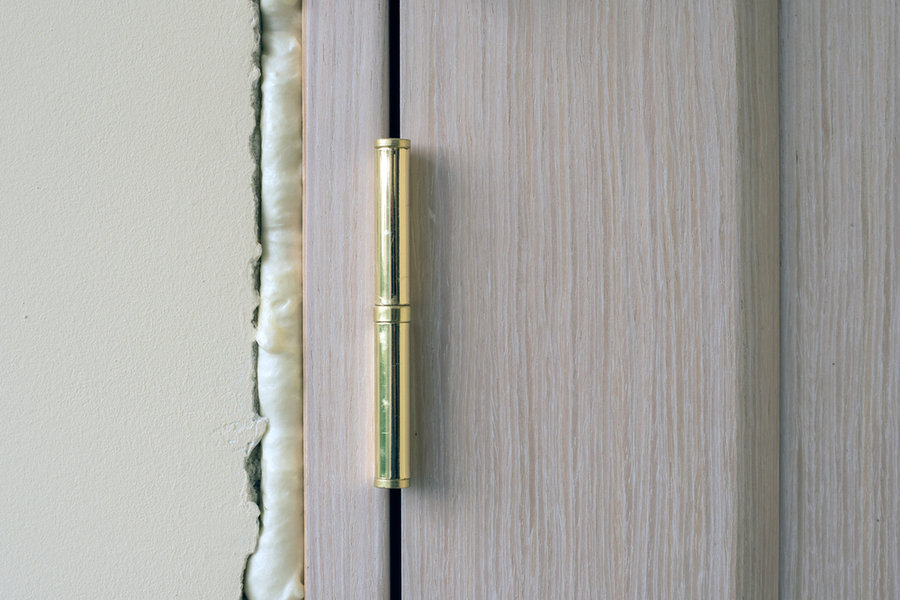
It’s crucial to check for openings in your home and seal them tightly, as roaches can fit through surprisingly small spaces under the doors.
Remember to be thorough in your inspection and sealing efforts- that’s an easy way to successfully keep those pesky critters out!
Finding these gaps around your door frames, once you’ve identified the gaps and cracks, it’s time to seal them up.
Caulk is a sealant designed for filling small cracks and gaps. It comes in a tube and can be applied using a caulking gun.
Additionally, weatherstripping is great for sealing the edges of your door frames, and it can be purchased at most hardware stores! Installing it is quite easy.
It’s important to remember that new gaps and cracks can appear over time. So make sure you’re regularly inspecting the areas for new openings.
If any arise, reseal them as soon as possible to ensure roaches or other pets don’t find a way into your home.
Door Sweeps

Door sweeps effectively stop roaches from entering your home, creating a physical barrier they cannot pass through.
Door sweeps are usually made of vinyl or rubber and can be quickly attached to the bottom of the door.
They can be screwed into place, nailed on, or pressed in a groove on the bottom of the door. Installing them is easy – with many door sweeps coming with instructions.
A door sweep creates an effective barrier that roaches can not crawl through.
It sits on the door’s threshold, and when it’s closed, it makes contact with the floor and seals off the gap between the bottom and the floor. This barrier will not allow any roaches to pass.
Door sweeps are an inexpensive way to prevent roaches from entering your home. They are available in hardware stores, and the cost is much lower than alternatives for pest control.
It’s essential to regularly check the door sweeps for any wear and tear and replace them as needed to ensure it’s functioning properly.
2. Keeping the Surroundings Clean

Keeping the area around the door clean can help deter roaches from entering your home.
Feed, crumbs, and moisture attracts roaches, so it’s important to limit the availability of these factors.
Cleaning up spills and crumbs, vacuuming or sweeping the area, and storing food in airtight containers can reduce the attraction of roaches to the area around the door and prevent them from entering your home.
Keeping the area clean can reduce the number of potential hiding places for the roaches and make it less attractive for them to live in.
3. Using Roach Repellent
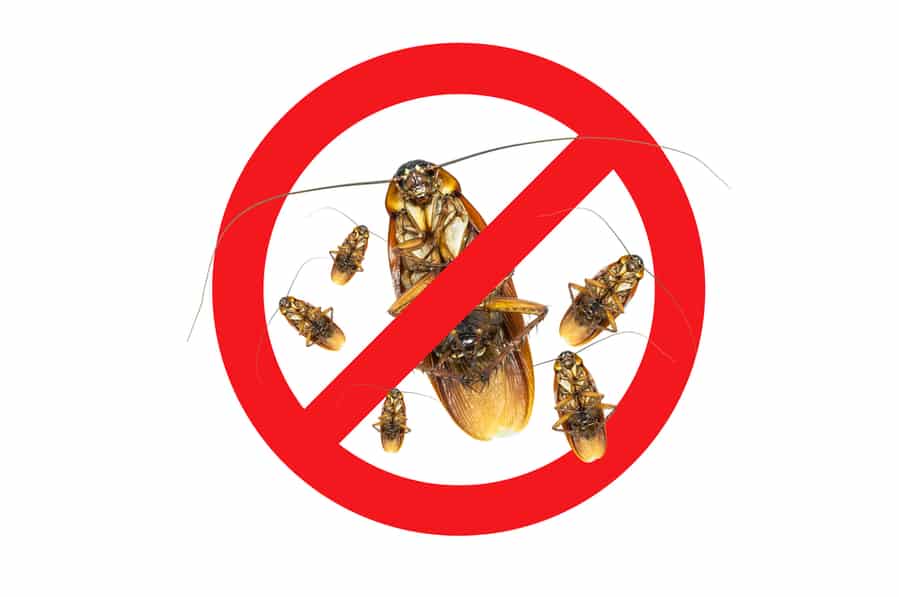
You can effectively keep roaches away from your home using a roach repellent.
These repellents, such as sprays, come in various forms and can be either chemical or natural-based.
Some of them are described below:
Chemical Repellents
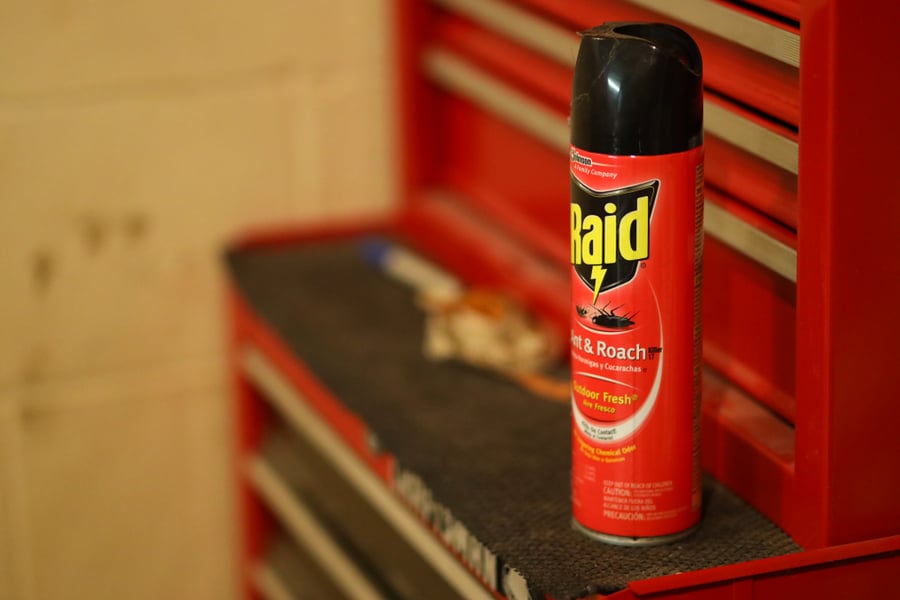
Many chemical-based roach repellents are available in the market.
These products typically contain toxic chemicals to roaches and can be used to create a barrier around the door or in other areas where they may be present.
Some popular repellents include:
- Boric Acid is a common and highly effective method of repelling roaches and other insects. It’s relatively inexpensive and easy to use
- Cypermethrin chemical disrupts the nervous system of insects and causes paralysis and death.
- Deltamethrin is a synthetic pyrethroid insecticide that controls various pests, including roaches. This coming in contact with roaches dehydrates them, eventually leading to death.
Natural Repellents

Natural repellents can be effective at repelling roaches. These repellents are less toxic and can be used around children and pets.
Examples of natural repellents include:
- Peppermint oil: The strong smell of peppermint oil is believed to mask the scents that insects use to locate food and mates, making it difficult for them to locate and feed.
- Catnip: It’s an effective natural insect repellent, particularly against roaches. Nepetalactone is an active ingredient in Catnip that repel insects.
It’s crucial to read the instructions carefully before using any repellent and follow them strictly. Overusing the repellent can be dangerous, and it’s important to use it in the right quantity and in the right areas.
Here are some tips for proper usage:
- Read the instructions thoroughly.
- Follow directions strictly.
- Do not overuse the repellent.
- Make sure to use it in the right quantity.
4. Keep the Humidity Low
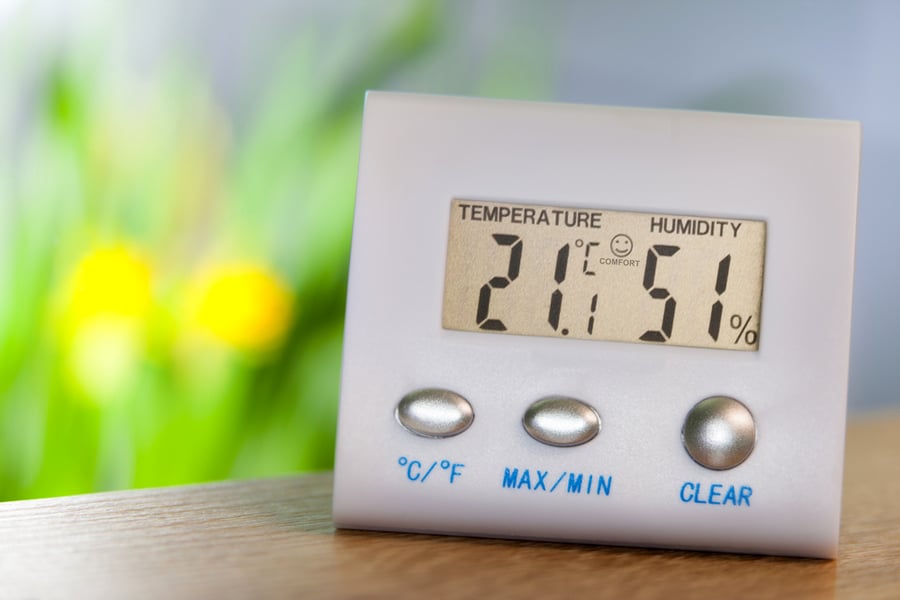
Keeping the humidity low in your home can help make it less hospitable to roaches. Because they thrive in humid environments.
Reducing humidity levels can make your home less attractive and reduce the chance of infestation.
Here are some tips for keeping your home’s humidity low:
Use of Dehumidifier

A dehumidifier can help minimize the humidity level in your home.
They remove excess moisture from the air, making the environment less hospitable to roaches.
Using the dehumidifier is an effective way to reduce roach infestation and keep your home comfortable.
Exhaust Fans

Exhaust fans in the bathroom and kitchen can help reduce humidity levels.
These fans can remove the excess moisture from the air, lowering humidity levels in these areas.
Fix Leaks

Fixing leaks in your home can also help reduce humidity and prevent mold growth.
Leaks can cause high humidity levels in certain areas of your home, making it more hospitable to roaches.
You can lower the humidity levels and prevent mold growth by fixing leaks.
Conclusion
When it comes to roaches, prevention is key.
If you are dealing with an infestation, taking measures such as sealing entry points in your home and using repellents are effective ways to get rid of the pests.
However, the best way to keep roaches away is by limiting their attractions by keeping your home clean and free of clutter, regularly dusting/ sweeping/ mopping around entryways, and utilizing door sweeps.
With these helpful tips in mind, you can make sure roaches become a thing of the past.
Frequently Asked Questions
What Do Roaches Look Like?
Roaches have a dark brown or black color and range from a few millimeters to several centimeters. They have six spindly legs and two antennae, and their bodies are usually flattened or oval.
What Do Roaches Eat?
Roaches are opportunistic feeders who eat almost anything, including food scraps, garbage, and even book buildings. They are particularly attracted to sugary, starchy foods such as sweets and starches.
How Do Roaches Get Into My Home?
Roaches can enter a home through cracks, crevices, and openings such as vents, drains, and pipes. They can also come into the home on items brought in, like boxes or bags.
Why Consider Roaches a Problem?
Roaches can be a problem because they can:
- Contaminate food and surfaces with their feces and shed body parts.
- Trigger allergies and asthma.
- Cause structural damage by gnawing on wood and paper.

